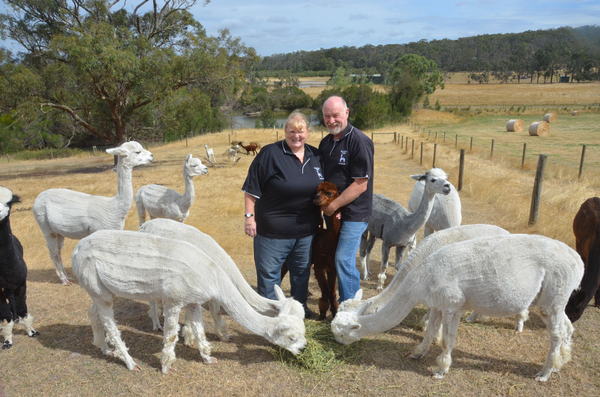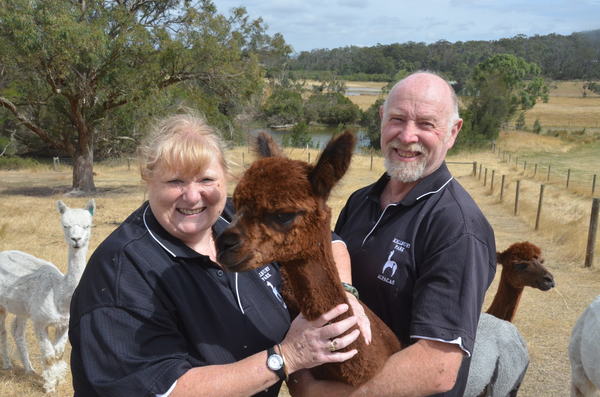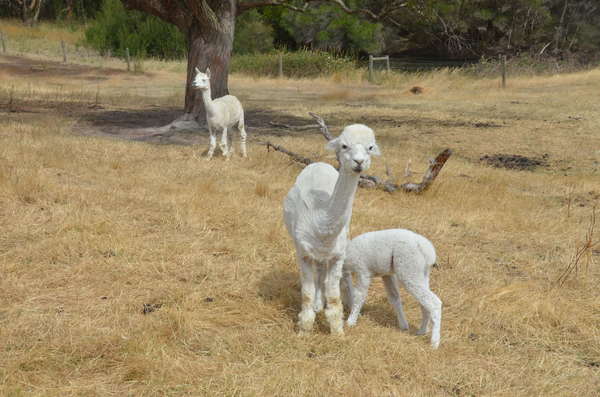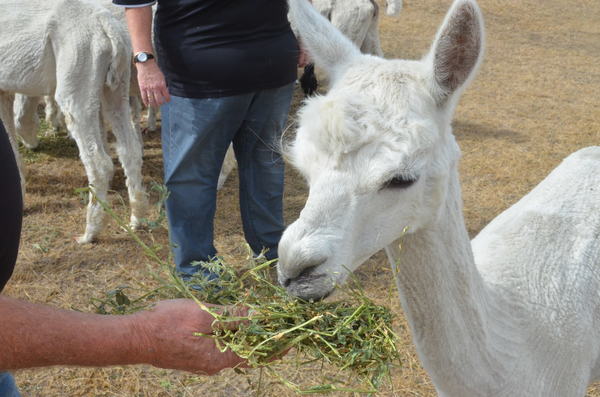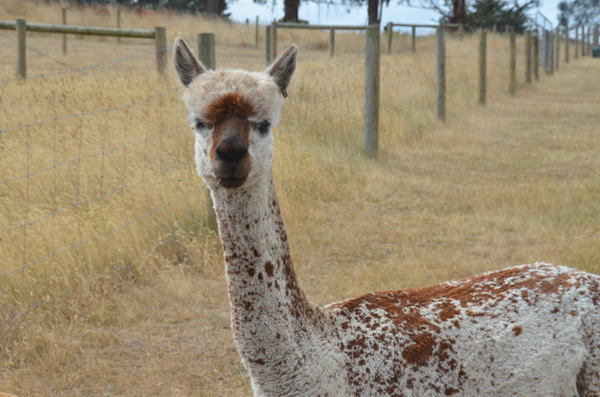By KATHRYN BERMINGHAM
Alpaca fleece is regarded as among the best textile fibre available and used to produce high-quality items around the world – and demand is growing. Bunyip’s Chris and Russell Pendlebury got their first alpacas eight years ago, and have since watched their herd grow. They spoke to KATHRYN BERMINGHAM about breeding, fleece and why they love alpacas.
“It sort of went from there. We bought more and more and the babies had babies.”
THERE’S a lot to love about alpacas, according to Chris and Russell Pendlebury.
Tucked away in the rolling hills of Bunyip is Kellbury Park – an expansive property where they live and raise alpacas.
They make a great partnership. Chris comes from a farming background and previously worked in management accounting and stock control, and Russ has had a long career working with fiberglass – making him invaluable in constructing farm infrastructure.
Yet neither Chris nor Russ had any experience with alpacas until eight years ago.
Established in 2008, Kellbury Park takes a philosophy of quality over quantity, and the pair work to continually improve the quality of their alpacas. They started out on two and a half acres of land at Garfield, but quickly outgrew the property as their herd expanded.
“We had four to begin with, and one was pregnant,” Chris recalls.
“Then we had Nino. He was so lonely, he needed a playmate so we went to a different breeder and we bought a brown mother with a little grey baby girl.
“It sort of went from there. We bought more and more and the babies had babies.”
The alpacas are now separated into two large paddocks, with the females and a wether male in one and the breeding males in another. As well as alpacas, the property is home to 20 heads of Angus cattle, three sheep, chooks and a dog.
Alpaca breeding at Kellbury is a planned and calculated process to ensure the best possible results. The aim is to breed animals with lower micron and higher density wool, making it particularly desirable.
“You get good girls and then you get better boys to put over the top, so you’re trying to get that next generation better,” Chris said.
The alpacas are shorn once a year, and each animal may produce anywhere from half a kilo to three kilos of wool. Chris describes the process as “labor intensive”, and explains that it’s carried out with the help of a shearer from Western Australia and a team of volunteers.
“The safest way to shear an alpaca is to have them tied down really securely for their own safety,” she said.
“It takes a couple of people to grab them, tie them up and lower them onto the ground, ready for the shearer to come and shear.”
Problems usually occur with male alpacas, which may spit or squeal.
In return, Chris and Russ help other alpaca breeders when it comes to shearing time – something she says is typical of people in the industry.
“We’ve found this industry is really good, the networking is great and everyone’s helpful,” she said.
“I think it’s quite competitive in other industries but with alpacas it’s not like that at all.”
Chris explains that the wool is then sold through a breeder’s co-op.
“Individually we haven’t got enough to get a big bale, so we take it along and our fleeces get put into the correct category – so the right colour and the right micron,” she said.
“Then it’s weighed and when that bag gets sold you get your share of the profit according to how much weight you’ve put into it.”
The fleece goes to New Zealand for processing and is then snapped up by buyers all over the world. Alpaca wool is used as a finer alternative to sheep’s wool in a variety of products, including fine suits, doona fillings, fashions, felting and carpets.
The point of difference between sheep and alpaca wool is in the fibre.
“Alpaca wool is actually a hollow fibre,” Chris explains.
“It doesn’t have lanolin in it so it’s not greasy and it’s very lightweight, which makes it very warm or cool.”
Overseas buyers aren’t the only ones who have noticed the quality of Russ and Chris’s herd. Their alpacas have won several prizes at shows in the region, each folded neatly in a box for safekeeping. In assessing an alpaca, judges are looking for animal conformation, handle of the fleece and fleece qualities including micron, lustre and crimp – the crimpier the better.
Each year, they attend shows including Lardner, Sale, Alexandra, Berwick, and make a point of doing a display each year at the Bunyip Show.
But they’re not done yet. In the next few years, Russ and Chris hope to expand their herd and continue to improve the quality of their wool.
“The focus has always been on finding ways to improve,” Chris yet
“We’re always learning something new. It’s an exciting place to be.”

